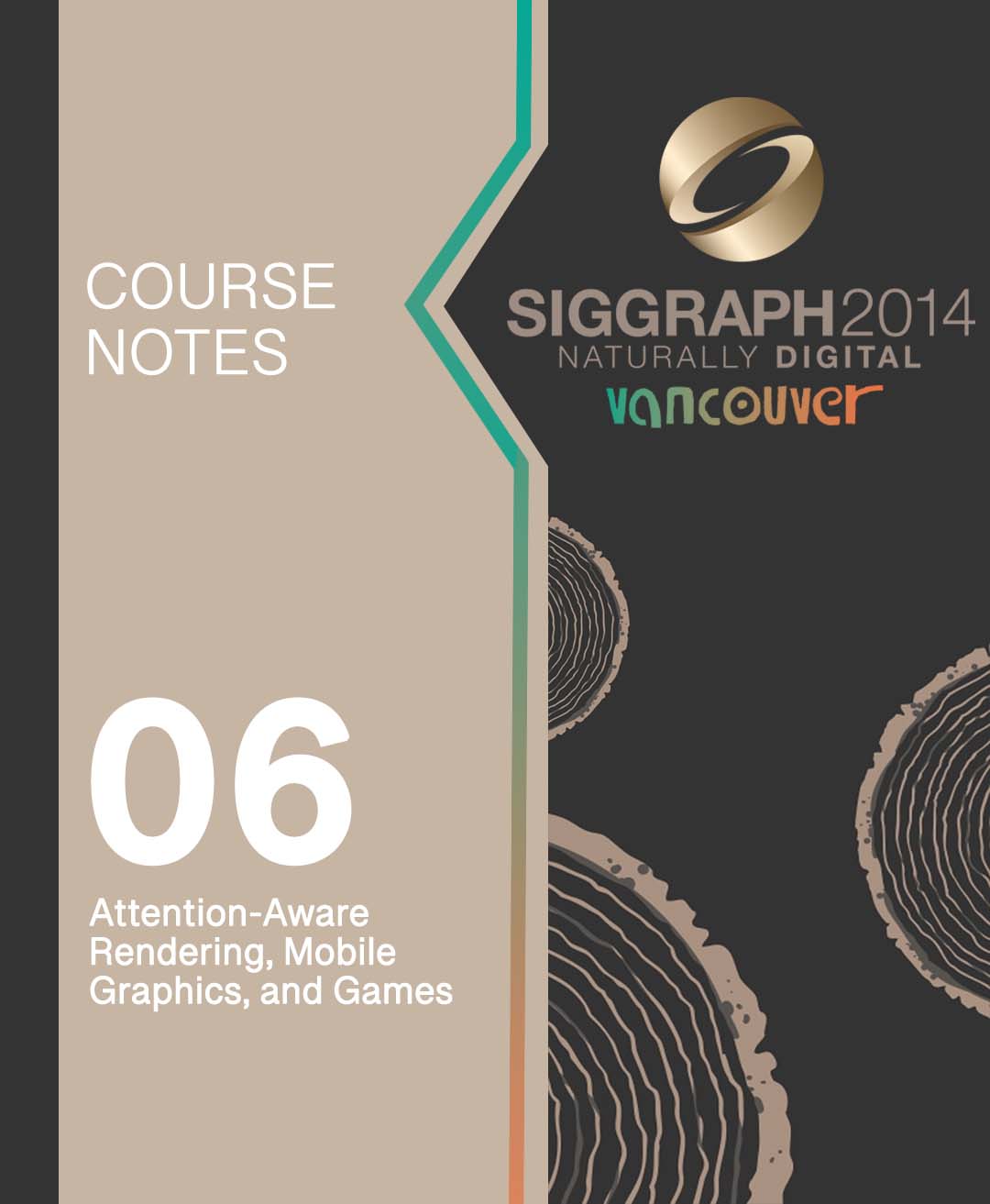“Attention-Aware Rendering, Mobile Graphics, and Games” by McNamara, Mania, Koulieris and Itti
Conference:
Type(s):
Title:
- Attention-Aware Rendering, Mobile Graphics, and Games
Organizer(s):
Presenter(s)/Author(s):
Entry Number: 06
Abstract:
Abstract
Rendering and design efficiency become critical when deploying computer graphics to mobile devices and games. This course addresses novel approaches to leverage models of visual attention, based on low and high level scene features, to propel attention-aware rendering computation. The result: perceptually-optimized scalable algorithms for mobile platforms and game design.
Recent research on low-level attention algorithms whose architecture and function is closely inspired from? biological brains will be reviewed (Baldi & Itti, 2010). High level saliency instigated by cognitive information such as scene context and topology will also be discussed (Zotos, Mania, & Mourkoussis, 2009; ?, ?).? Prediction of attention can significantly improve many aspects of computer graphics and games. Image synthesis can be accelerated by reducing computation on non-attended scene regions. Subtle gaze manipulation? (Bailey, McNamara, Sudarsanam, & Grimm, 2009a) improves mammography training and spatial recall as well as dynamically influence interactive neuroscientific protocols in fMRI.?
The course will showcase through interactive content how employing a visual attention model leads to efficient game design. Many games rely on search or target detection tasks to solve riddles or find game objects.? Adjusting the difficulty of a level could be facilitated by relocating objects estimated to attract attention.? By incorporating visual attention estimation, perceptually optimized renderers for mobile platforms can dynamically ignore perceptually non-important details. Modern video games and interactive applications are? simultaneously deployed for computers, consoles and mobile devices of diverse computational power. Complex effects including but not limited to complex refraction and subsurface scattering that are standard in? desktop computers, could also scale efficiently in portable devices if attention-aware. Examples such as the integration of a high level saliency model in a LOD manager, enabling complex effects in low-power devices by applying them in regions expected to be attended to, are going to be demonstrated.
This course delivers a cutting-edge overview of attention models and their application in rendering, mobile technology and gaming platforms. ?





